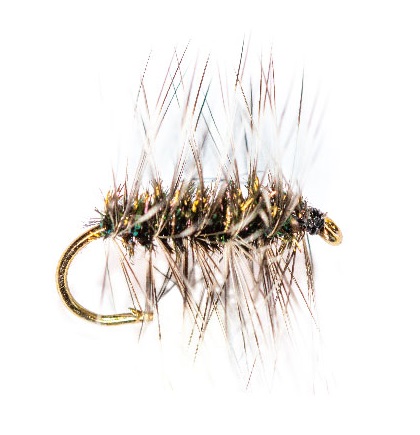GRIFFITHS GNAT
Produced by Michael Pattinson - July 2020.

This fly works on rivers and still waters and is most effective in the smaller sizes. It can be tied with a pearl twinkle tail in which case it is called a sparkle gnat. It is the fly mentioned as one of Keith Saunder's favourites for the Nidd in this months article in Trout and Salmon.
Materials
- Barbless Hook. Dry fly size 14 to 24
- Thread - Black
- Body of peacock herl
- Tail optional of pearl twinkle
- Grizzle genetic hackle
Method
- Mount the hook and squeeze the barb down.
- Attach the thread behind the eye and go down the shank in touching turns.
- Stop the thread at the barb.
- Tie in the pearl twinkle if so desired leaving two or three strands extending out as a tail.
- Prepare a grizzle hackle with short barbs by stripping off all the barbs on one side and cutting the barbs short for a few mms on the other side.
- Tie this in. The barbs should be just a little more than the gape of the hook.
- At the same point catch in one (or at the most two) fairly SLIM peacock herls and wind the thread to the eye binding down the stems of the peacock herl, the pearl twinkle and the hackle stem as you go.
- Add a little varnish to the body for strength.
- Then wind the peacock herl (without twisting it) in touching turns to the eye.
- Peacock herl has two sides to it (either left or right) and can be wound either way but it should be wound the same way all the way up the shank. It is best wound with the stem towards the eye and the herl pointing back to the tail.
- Secure the peacock herl at the eye and remove the excess.
- Attach hackle pliers to the grizzle hackle and wind it in open turns towards the eye without twisting it as you wind. This process is known as palmering the hackle.
- Make a small head with the thread and finish with half hitches or a whip finish.
- Add a small drop of varnish to the head and clear the eye.